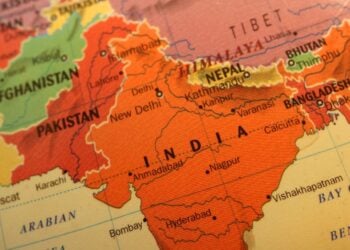Our global world is brimming with tension. There is war in Ukraine, superpowers are at odds with each other, numerous conflicts continue in Africa and the Middle East, and persistent nuclear proliferation concerns.
International business, however, carries on (even though the media may imply otherwise). “Unscrupulous” entrepreneurs may try to take advantage of these tensions to produce and sell imitations of branded products, without concern for repercussions.
Intellectual property rights carry on, too, in the context of international commerce. This is especially true for trademarks. Trademark rights are national rights. That is, trademark rights in one country do not extend into other countries. Trademark rights must be established by a brand owner in each country in which the owner is conducting business, if the owner wants protection for that brand in that country.
In the midst of strained relationships between countries, how do trademark rights survive? How are trademark rights obtained and enforced to ensure brand protection across the globe?
The short answer is treaties. Such treaties are often respected – even in times of tension. As for trademarks, international business continues and buyers everywhere want to be assured that they are buying genuine products and not counterfeits.
The Paris Convention
The Paris Convention for the Protection of Industrial Property (1883) is one of the oldest and most significant treaties in intellectual property. An important feature of this treaty is that each member country must provide foreign trademark owners the same level of protection as its own nationals. In other words, a country cannot give its nationals a home country advantage. The Paris Convention also establishes a connection between a first-filed trademark application and later-filed trademark applications for the same mark, if the later-filed applications are filed within six months of that first-filed application (with the filing date of the first-filed application then becoming the effective filing date for those later-filed applications). This allows a trademark owner some time to evaluate the scope of the international market for its branded products, consider where (what countries) it wants to seek trademark registration and then marshal the resources to do so.
Madrid Agreements
The Madrid Agreement Concerning the International Registration of Marks (1891) and the Madrid Protocol (1989) simplify the international registration of trademarks. The Madrid Protocol allows a trademark owner to file a single application with the World Intellectual Property Organization (WIPO) to seek protection in multiple countries.
Nice Agreement
Officially called the Nice Agreement Concerning the International Classification of Goods and Services for the Purposes of the Registration of Marks (1957) provides a standardized classification system for goods and services for trademark registration purposes. A trademark registration must identify the goods and services for which brand protection exists. Before this treaty (and even sometime afterward) many countries had their own classification system for goods and services, which made things very confusing for international brand protection and enforcement.
Trademark Law Treaty
The Trademark Law Treaty of 1994 (TLT) establishes minimum requirements and standardizes certain aspects of trademark application and registration processes, such as the filing date and content of trademark applications. At a minimum, an application to register a trademark should include the applicant’s name and address, a clear representation of the trademark, and a list of goods and services to be covered by the registration. It encourages the use of the Nice Agreement classification system, the prompt issuance of filing receipts and timely communication of requirements and of refusals. The TLT also encourages online filing and electronic communications between the trademark office and the applicant.
The Trips Agreement
The Trips Agreement, formally known as Agreement on Trade-Related Aspects of Intellectual Property Rights (1994), sets minimum standards for trademark protection and enforcement, ensuring that countries establish effective systems for the protection of brands.
These are all multilateral treaties (where many countries are treaty signatories) and there are, of course, other treaties related to trademarks. The harmonization of international trademark law is the goal for most of these treaties.









